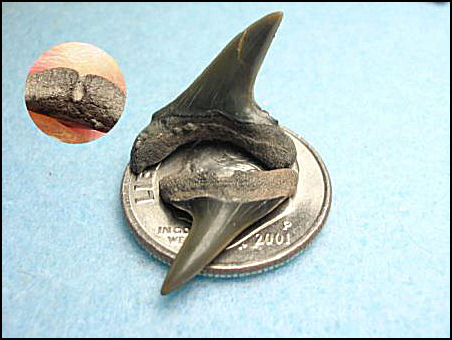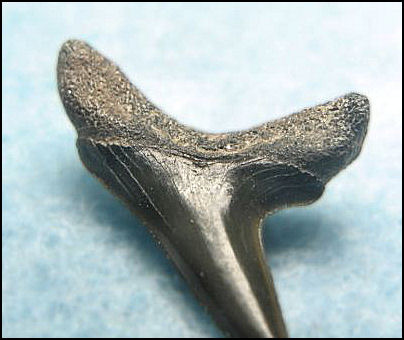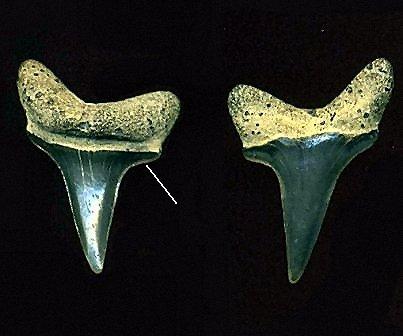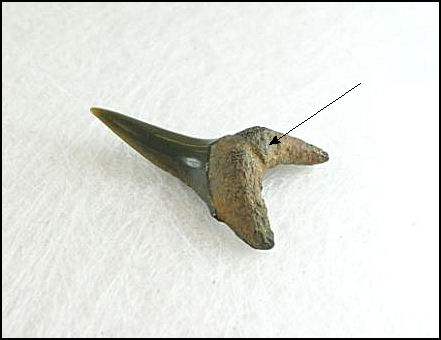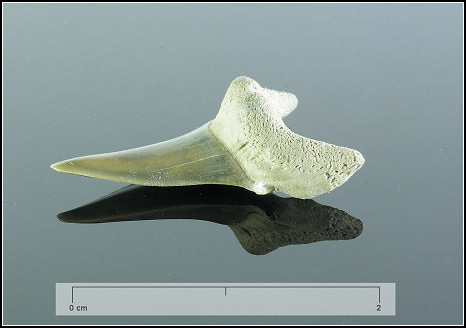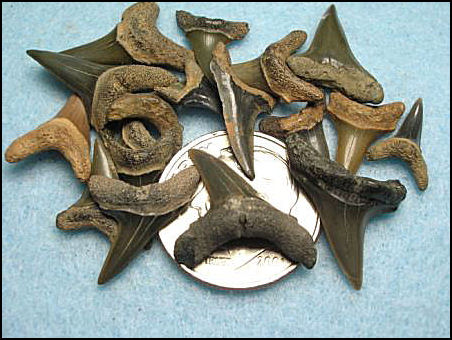|
The Extinct Thresher Age - Cretaceous Commonality - Common
Fossil records of Paranomotodon angustidens are confined to
the Cretaceous sediments and sees a worldwide
distribution. The teeth of P. angustidens are on the small side,
averaging about ˝ inch and can be fairly common in some locations. The
root has a “U” shape appearance with a short nutrient groove. A very distinct
feature of Paranomotodon angustidens is the concave basal
root margin seen on the labial side of the tooth. The shoulders of the
crown have a block like appearance which I have seen described as “weak
lateral cusplets” or “vestigial
cusplets”. The crown is erect on anterior teeth and
distally
curved on laterals.
The teeth of
Paranomotodon angustidens
average about 1/2 inch
when
Lateral tooth.
The short nutrient groove on an anterior tooth.
Monmouth County, NJ
Typical Paranomotodon angustidens finds. |
